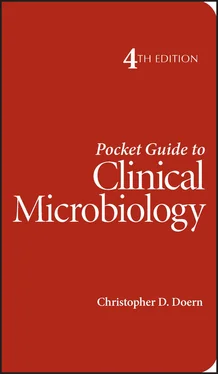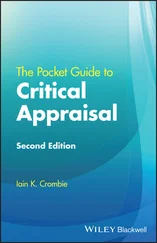Taxonomic Classification of Human Viruses
The taxonomy of viral classification is arranged in the following way…
OrderFamilySubfamilyGenusSpecies
Practically speaking, most clinical microbiologists organize viruses in terms of genome structure, family, and genus, and only rarely are the subfamily or species designations utilized. As such, the following taxonomic structure is presented in terms of what would be most useful to the practicing clinical microbiologist.
Single-stranded, nonenveloped DNA virusesFamily. ParvoviridaeGenus. ErythrovirusSpecies. Human parvovirus B19 virus
Double-stranded, nonenveloped DNA virusesFamily. PolyomaviridaeGenus. PolyomavirusSpecies. JC polyomavirus, BK polyomavirusFamily. PapillomaviridaeGenus. PapillomavirusSpecies. Human papillomavirusFamily. AdenoviridaeGenus. MastadenovirusSpecies. Human adenoviruses (species A to G)
Double-stranded, enveloped DNA virusesFamily. PoxviridaeGenus. OrthopoxvirusSpecies. Vaccinia virus, variola virus smallpox virus, cowpox virus, monkeypox virusGenus. MolluscipoxvirusSpecies. Molluscum contagiosum virusGenus. ParapoxvirusSpecies. Orf virusFamily. HepadnaviridaeGenus. OrthohepadnavirusSpecies. Hepatitis B virusFamily. HerpesviridaeGenus. SimplexvirusSpecies. Human herpesvirus 1 (herpes simplex virus type 1; HHV-1), human herpesvirus 2 (herpes simplex virus type 2; HHV-2)Genus. VaricellovirusSpecies. Human herpesvirus 3 (varicella-zoster virus [VZV]; HHV-3)Genus. LymphocryptovirusSpecies. Human herpesvirus 4 (Epstein-Barr virus [EBV]; HHV-4)Genus. CytomegalovirusSpecies. Human herpesvirus 5 (CMV; HHV-5)Genus. RoseolovirusSpecies. Human herpesvirus 6 (roseola virus; HHV-6), human herpesvirus 7 (HHV-7)Genus. RhadinovirusSpecies. Human herpesvirus 8 (HHV-8)
Single-stranded, positive-sense, nonenveloped RNA viruses
Family. PicornaviridaeGenus. EnterovirusSpecies. Enterovirus A (human coxsackievirus A2, human enterovirus 71) Enterovirus B (human coxsackievirus B1, human echovirus), Enterovirus C (human poliovirus 1 to 3, human coxsackievirus A1), Enterovirus D (human enterovirus 68, 70, and 94), Rhinovirus A, B, and C.Genus. AphthovirusSpecies. Foot-and-mouth disease virusGenus. HepatovirusSpecies. Human hepatitis A virus (HHAV)
Family. CaliciviridaeGenus. NorovirusSpecies. Norwalk virusGenus. SapovirusSpecies. Sapporo virus
Family. AstroviridaeGenus. AstrovirusSpecies. Human astrovirus
Single-stranded, positive-sense, enveloped RNA viruses
Family. CoronaviridaeGenus. CoronavirusSpecies. Human coronavirus, Severe acute respiratory syndrome (SARS) virus, Middle eastern respiratory syndrome (MERS) virusGenus. TorovirusSpecies. Human torovirus
Family. TogaviridaeGenus. AlphavirusSpecies. Sindbis virus, Eastern equine encephalitis (EEE) virus, Western equine encephalitis (WEE) virus, Venezuelan equine encephalitis (VEE) virus, Chickungunya virus, many other virusesGenus. RubivirusSpecies. Rubella virus
Family. FlaviviridaeGenus. FlavivirusSpecies. Yellow fever virus, West Nile virus, St. Louis encephalitis (SLE) virus, Japanese encephalitis (JE) virus, Dengue virus (types 1 through 4), Zika virus, many other virusesGenus. HepacivirusSpecies. Hepatitis C virus (HCV)
Single-stranded, negative-sense, enveloped RNA viruses
Family. RhabdoviridaeGenus. LyssavirusSpecies. Rabies virus
Family. FiloviridaeGenus. “Marburg-like viruses”Species. Marburg virusGenus. “Ebola-like viruses”Species. Ebola virus
Family. OrthomyxoviridaeGenus. Influenzavirus ASpecies. Influenza A virusGenus. Influenzavirus BSpecies. Influenza B virusGenus. Influenzavirus CSpecies. Influenza C virus
Family. ParamyxoviridaeGenus. RespirovirusSpecies. Sendai virus, Human parainfluenza virus (types 1 and 3)Genus. RubulavirusSpecies. Mumps virus, Human parainfluenza virus (types 2 and 4)Genus. MorbillivirusSpecies. Measles virusGenus. HenipavirusSpecies. Hendra virus, Nipah virusGenus. PneumovirusSpecies. Human respiratory syncytial virus (RSV)Genus. MetapneumovirusSpecies. human metapneumovirus
Family. BunyaviridaeGenus. OrthobunyavirusSpecies. Bunyamwera virus, California encephalitis virus, La Crosse virus, many other virusesGenus. HantavirusSpecies. Hantaan virus, Sin Nombre virus, other virusesGenus. NairovirusSpecies. Crimean-Congo hemorrhagic fever virus (CCFV), other virusesGenus. PhlebovirusSpecies. Rift Valley fever virus, other viruses
Family. ArenaviridaeGenus. ArenavirusSpecies. Lymphocytic choriomeningitis (LCM) virus, Lassa virus, Junin virus, Machupo virus, Sabia virus, other viruses
Double-stranded, enveloped RNA viruses
Family. RetroviridaeGenus. DeltaretrovirusSpecies. Human T-lymphotropic virus type 1 (HTLV-1), human T-lymphotropic virus type 2 (HTLV-2)Genus. LentivirusSpecies. Human immunodeficiency virus type 1 (HIV-1), human immunodeficiency virus type 2 (HIV-2)
Family. ReoviridaeGenus. RotavirusSpecies. Rotavirus (types A, B, and C)Genus. ColtivirusSpecies. Colorado tick fever virus
Taxonomic Classification of Fungi
The taxonomic classification of fungal organisms is complex because fungi can be classified by different methods. The phylogentic taxonomy for fungi is represented in this chapter and is subject to the International Code of Nomenclature (ICN) for algae, fungi, and plants ( http://www.iapt-taxon.org). This organization was formally known as the International Code of Botanical Nomenclature (ICBN).
Fungi are divided into four divisions (phylum or subphylum): Mucormycotina, Entomophthoromycotina, Ascomycota, and Basidiomycota. The Protozoa and Chromista kingdoms include some members that possess a fungus-like appearance and are clinically relevant, such as Rhinosporidium and Pythium .
The taxonomy of fungal classification is arranged in the following way…
PhylumSubphylumClassOrderFamilyGenusSpecies
Since the last writing of this Pocket Guide, a significant change has occurred in the world of fungal taxonomy. As of January 1, 2013, only one name will be used to identify fungi, and the “correct” name will be that which was first identified. Why has this occurred? Most scientists agree that the convention of having multiple names for fungi to represent the differing states of a fungus is no longer necessary with the use of DNA sequence analyses. The multi-name convention is confusing, and is especially so for the clinical microbiologist who is trying to communicate understandable and actionable information to those caring for patients.
Because fungal taxonomic naming conventions are changing more quickly than for bacteria, parasites, and viruses, publishing an extensive list of fungal taxonomy would be rendered inaccurate as soon as this Pocket Guide was published. In fact, many of the names that would be included as of the writing of this book will likely cease to exist.
Taxonomic Classification of Parasitesa
The term “parasite” refers to a group of eukaryotic organisms, about 200 of which are medically relevant helminths, and 80 of which are medically relevant protozoan species. Within this subset of nearly 300 parasites, about 100 species are commonly found in humans, and an even smaller number within that cause a disproportionate number of important diseases. Presented in the following table are the taxonomic classifications of some of the most important human parasites.
Since the last edition of this Pocket Guide was published, some significant taxonomic changes have occurred. The two most clinically relevant changes relate to the Microsporidia and Blastocystis hominis . Due to recent genome-wide analyses, Microsporidia now belong to the kingdom Fungi. The taxonomy of Blastocystis hominis has been controversial, and it has previously been considered a fungus and also as protozoa. Recent genome analyses suggest it is most closely related to Proteromonas , though this organism is a flagellate and B. hominis does possess a flagellum and is not motile. It is now part of the kingdom Chromista rather than the Protozoa.
Читать дальше












